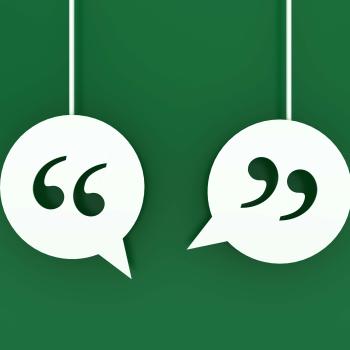Research Building Blocks: "Cite Those Sources!"

- Preview |
- Standards |
- Resources & Preparation |
- Instructional Plan |
- Related Resources |
- Comments
Overview
Children are naturally curious—they want to know "how" and "why." Teaching research skills can help students find answers for themselves. This lesson is taken from a research skills unit where the students complete a written report on a state symbol. Here, students learn the importance of citing their sources to give credit to the authors of their information as well as learn about plagiarism. They explore a Website about plagiarism to learn the when and where of citing sources as well as times when citing sources is not necessary. They look at examples of acceptable and unacceptable paraphrasing. Finally, students practice citing sources and creating a bibliography.
Featured Resources
Avoiding Plagiarism: This resource from Purdue OWL gives comprehensive advice about how to avoid plagiarism.
From Theory to Practice
Teaching the process and application of research should be an ongoing part of all school curricula. It is important that research components are taught all through the year, beginning on the first day of school. Dreher et al. explain that "[S]tudents need to learn creative and multifaceted approaches to research and inquiry. The ability to identify good topics, to gather information, and to evaluate, assemble, and interpret findings from among the many general and specialized information sources now available to them is one of the most vital skills that students can acquire" (39).
Further Reading
Common Core Standards
This resource has been aligned to the Common Core State Standards for states in which they have been adopted. If a state does not appear in the drop-down, CCSS alignments are forthcoming.
State Standards
This lesson has been aligned to standards in the following states. If a state does not appear in the drop-down, standard alignments are not currently available for that state.
NCTE/IRA National Standards for the English Language Arts
- 1. Students read a wide range of print and nonprint texts to build an understanding of texts, of themselves, and of the cultures of the United States and the world; to acquire new information; to respond to the needs and demands of society and the workplace; and for personal fulfillment. Among these texts are fiction and nonfiction, classic and contemporary works.
- 3. Students apply a wide range of strategies to comprehend, interpret, evaluate, and appreciate texts. They draw on their prior experience, their interactions with other readers and writers, their knowledge of word meaning and of other texts, their word identification strategies, and their understanding of textual features (e.g., sound-letter correspondence, sentence structure, context, graphics).
- 4. Students adjust their use of spoken, written, and visual language (e.g., conventions, style, vocabulary) to communicate effectively with a variety of audiences and for different purposes.
- 5. Students employ a wide range of strategies as they write and use different writing process elements appropriately to communicate with different audiences for a variety of purposes.
- 6. Students apply knowledge of language structure, language conventions (e.g., spelling and punctuation), media techniques, figurative language, and genre to create, critique, and discuss print and nonprint texts.
- 7. Students conduct research on issues and interests by generating ideas and questions, and by posing problems. They gather, evaluate, and synthesize data from a variety of sources (e.g., print and nonprint texts, artifacts, people) to communicate their discoveries in ways that suit their purpose and audience.
- 8. Students use a variety of technological and information resources (e.g., libraries, databases, computer networks, video) to gather and synthesize information and to create and communicate knowledge.
- 11. Students participate as knowledgeable, reflective, creative, and critical members of a variety of literacy communities.
- 12. Students use spoken, written, and visual language to accomplish their own purposes (e.g., for learning, enjoyment, persuasion, and the exchange of information).
Materials and Technology
- Chart paper
- Internet access
Websites
Student Objectives
Students will
- discuss plagiarism.
- practice paraphrasing.
- credit sources used in research.
Instruction & Activities
- It is very important for students to understand the need for, and purpose of, giving credit to the sources they use in the research process. The students need to learn about the concept of plagiarism. Plagiarism is using others' ideas or words without clearly acknowledging the source of that information. While discussing the concept of plagiarism, use this avoiding plagiarism Web page to learn the when and where of citing sources as well as times when citing sources is not necessary.
- To remind students of the basic rules to avoid plagiarism, write the following on chart paper and post it close to the research area or media center in the classroom.
- Give credit whenever you use
-
another person's idea, opinion, or theory.
-
any facts, statistics, graphs, drawings-any pieces of information-that are not common knowledge.
-
quotations of another person's actual spoken or written words.
-
paraphrases of another person's spoken or written words.
-
- After the discussion, use the example paragraph from How to Recognize Unacceptable and Acceptable Paraphrases to show the appropriate/inappropriate way to paraphrase information.
- To ensure students are aware of proper citation procedures, reinforce that awareness by
- providing them with a group of resources to create a bibliography for frequent practice in an activity or learning-center situation. Creating a Bibliography for Your Report discusses the various components of a bibliography.
- modeling the step-by-step development of a bibliography for your class in a variety of settings and subject areas.
- posting the standard bibliography format in a prominent place in your classroom.
- providing them with a group of resources to create a bibliography for frequent practice in an activity or learning-center situation. Creating a Bibliography for Your Report discusses the various components of a bibliography.
Extensions
Student Assessment / Reflections
As this is only one step in teaching the research process, students need not be graded on the activity. Continued practice in paraphrasing and quoting material is most important, with teacher and peer feedback benefitting the student researcher. Final bibliographies turned in with the research report could then be graded based on accurate information and style.

Add new comment